Connecting the Northwest: Build Northwest Economic Forum & Rail Summit Event Recap
Between the bustling ports, continuous rail lines, mountain roads and marine highways, the Pacific Northwest has a uniquely powerful multimodal network for moving people and goods. These world-class export gateways, growing inland corridors and community links depend on collaboration that transcends sectors and political borders. Regional leaders from government and industry brought meaningful ideas to this vision at the Build Northwest Economic Forum and Pacific Northwest Rail Summit in Portland, Oregon, October 14-17. In case you missed it, session recordings and presentations are available here. Continue reading for key themes and takeaways from the event.
Build Northwest Economic Forum | Session Highlights
Ensuring Trade Predictability, Modernization and Infrastructure Investments in the PNW
It’s a pivotal time for the U.S.-Canada trade relationship, as the United States-Mexico-Canada Agreement (USMCA/CUSMA) will be under review by the three countries next July. This session underscored the vital role of the agreement in fostering cross-border trade and regional integration, highlighting its impact on jobs, innovation and collaboration in our region.
Business leaders and experts emphasized the need for predictability, given the interdependence in key sectors like manufacturing and agriculture. For example – Canada’s potash and America’s nitrogen and phosphate are essential minerals used in fertilizer by farmers around the region.
Looking ahead, panelists emphasized that the U.S.-Canada trade relationship is a globally-competitive alliance that can be strengthened by regulatory alignment, mutual recognition of standards and free movement of compliant goods.
Permitting delays are some of the biggest barriers to building critical transportation and energy infrastructure. Alex Herrgott, the Permitting Institute, and Colleen Giroux-Schmidt, Innergex, discussed what challenges and opportunities exist to accelerate the critical, yet tedious process.
Permitting is a bipartisan issue, with general consensus that streamlining the process without compromising review standards is a win-win approach towards building infrastructure.
Keeping requirements consistent will enable smart and sustainable infrastructure development to get off the ground faster and ultimately serve generations to come. Speakers emphasized that cross-border coordination, multi-sector and Indigenous involvement, and commitment to environmental and economic stewardship will be essential.
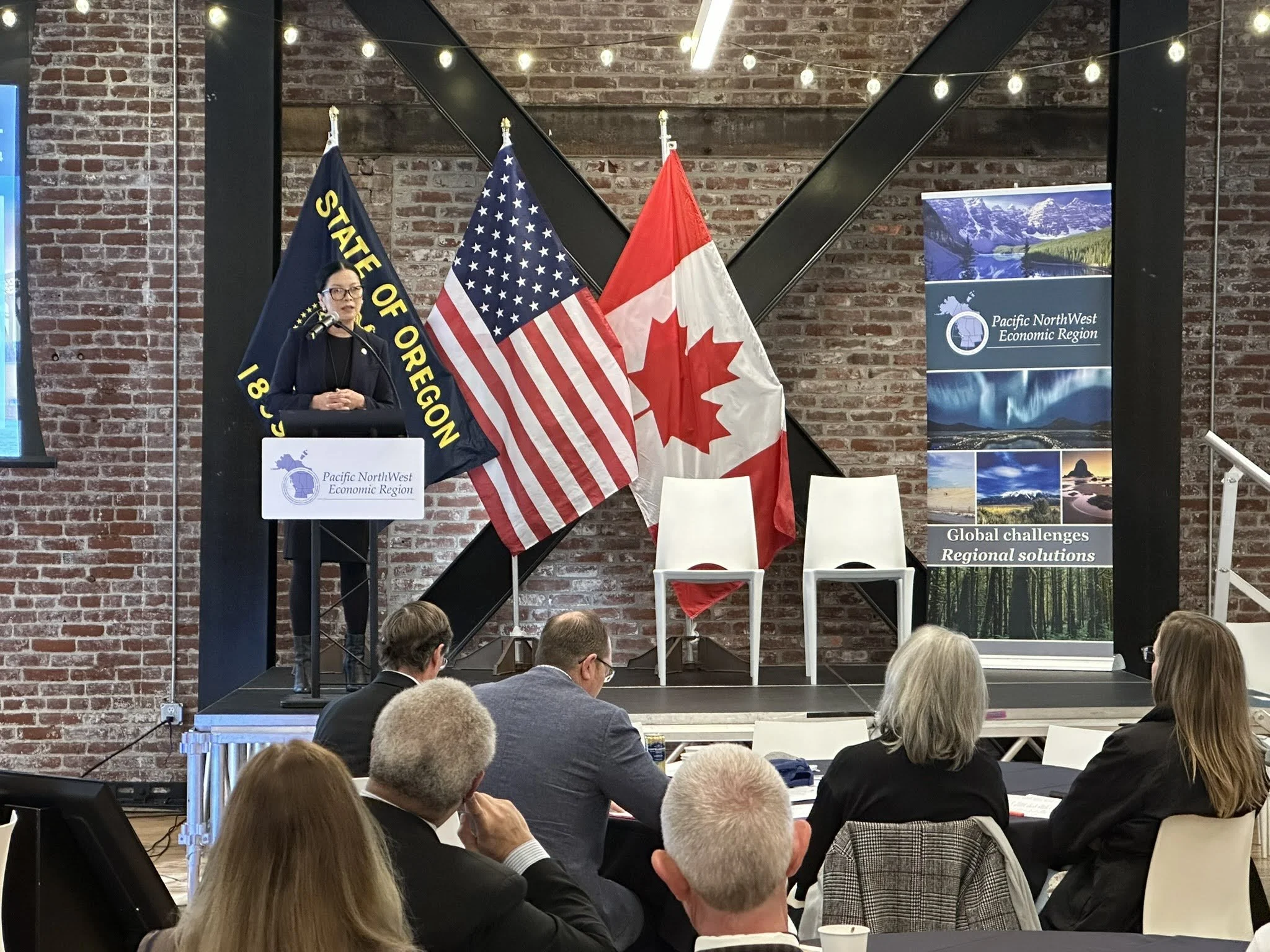


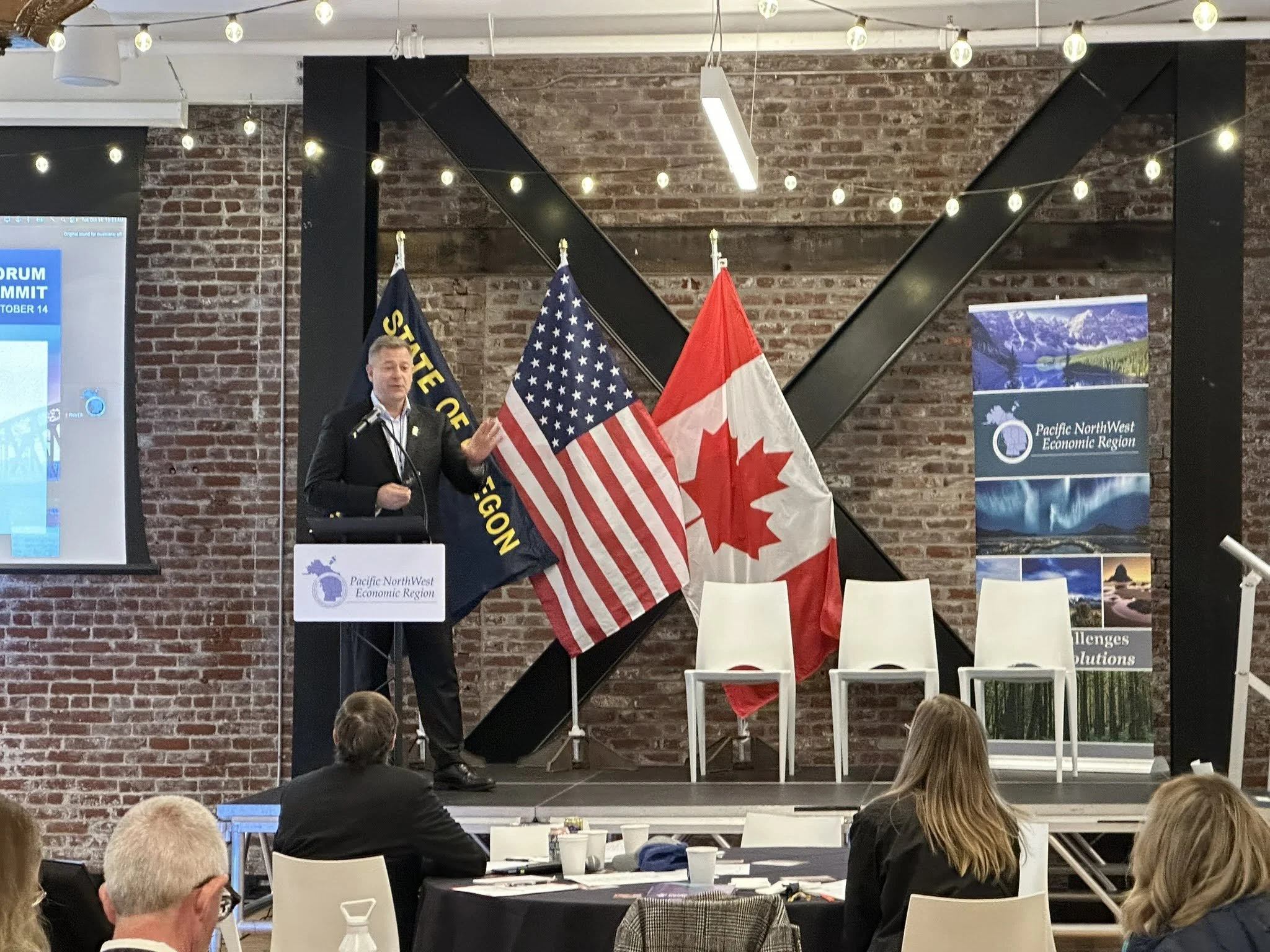

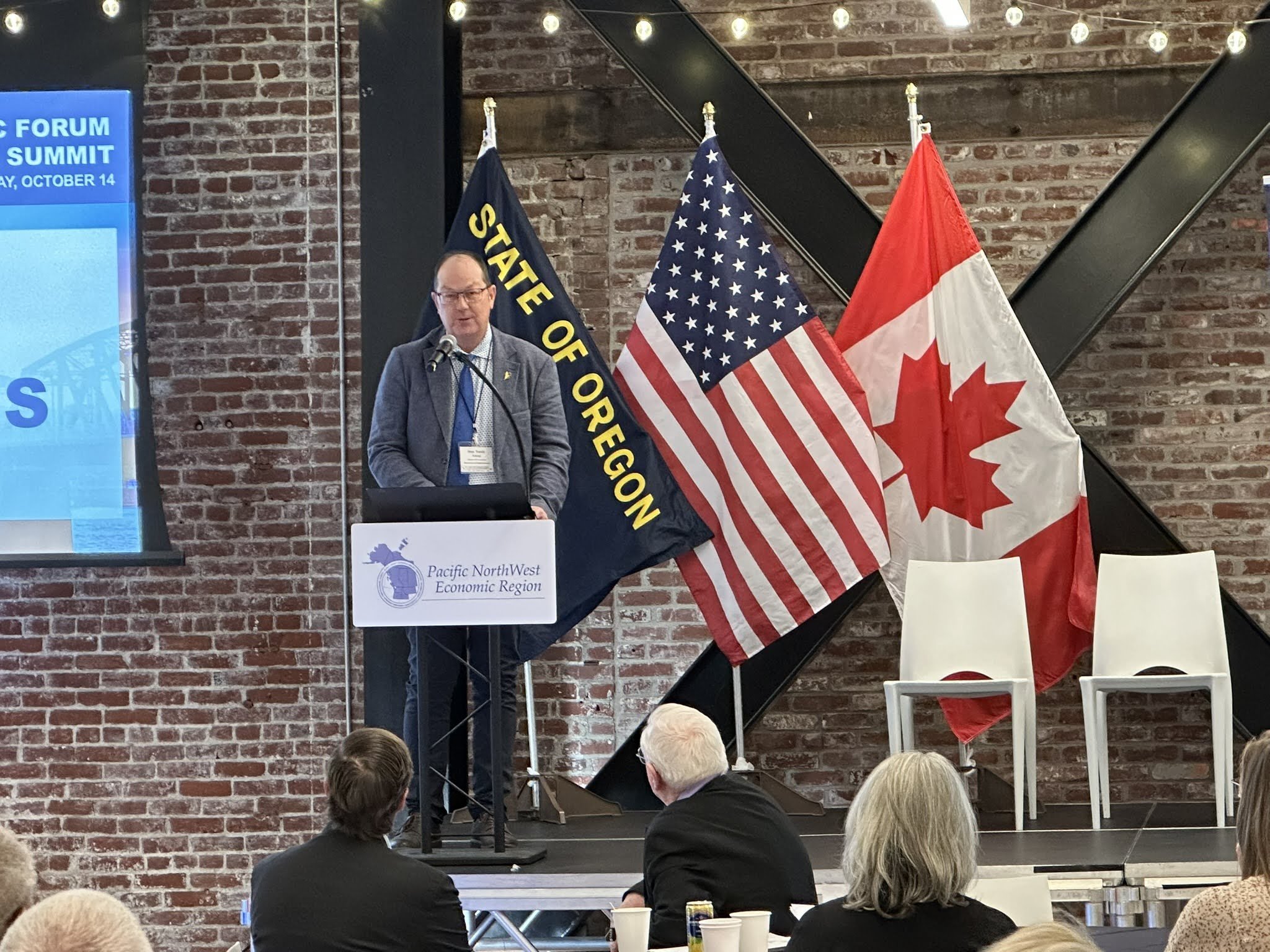

Strengthening Multimodal Supply Chains
Freight is moved across the region by truck, train, barge and plane, and relies on coordinated logistics infrastructure to reach its destination. Three sessions explored the importance of long-term corridor planning, strategic export gateways and upgrades to supporting infrastructure.
Cross-Border Freight Movement: Leaders discussed how to better connect multimodal supply chain assets – rail, ports, roads, etc. – into strategic economic corridors that link a cross-border region.
Columbia-Snake River System: The river system was highlighted as a marine highway and backbone of the region’s agricultural export market, moving 60% of all U.S. wheat exports annually. Speakers also spotlighted plans to replace the Hood River-White Salmon Bridge, a 100-year-old link between Washington and Oregon over the Columbia River.
Trucking & Intermodal: Leaders emphasized the essential role trucking and intermodal systems play in keeping goods moving across the region, while addressing challenges the industry faces, such as a lack of available truck parking and growing workforce demands.
Legislative Roundtable on Supply Chain Resilience
Policymakers from Alberta, British Columbia, Saskatchewan, Montana, Idaho, Washington and Oregon discussed the supply chain complexities, challenges and opportunities for the binational region – emphasizing permit reform and regulatory alignment as keys to enhancing critical infrastructure. Panelists agreed that bipartisan, cross-border collaboration is essential to advance the aggregate supply chain network, in which each mode plays a distinct and vital role in the broader system.




“I think it’s clear that across this region we share one coast, one market and one future. So if we choose partnership over partisanship as some of our colleagues have said, I believe we can build what we believe in together going forward.”
Pacific Northwest Rail Summit | Session Highlights
Public-Private Partnerships Unlock Major Investments in Infrastructure
Across the sessions, this theme was clear: strong public-private partnerships are essential to unlocking the investments needed to modernize infrastructure that supports both freight operations and passenger rail service. These partnerships help accelerate project delivery and ensure investments deliver stronger economic competitiveness, community mobility and environmental/agricultural stewardship.
Leaders showcased a wide range of case studies illustrating how P3s can fit into a project’s lifecycle, including:
Bundling projects into a combined approach can enable project sponsors to attract greater private sector investment and better leverage state and federal innovative financing tools
Delivering environmental benefits through improving salmon passage and habitat restoration, exploring co-location of needed electric transmission lines under railroad right of way and protecting the region’s premier agricultural crops through prevention of the spotted lanternfly – an invasive species that’s known to hitch a ride on rail infrastructure
Exploring opportunities for permitting and regulatory reform that can help move projects forward across all levels of the rail network

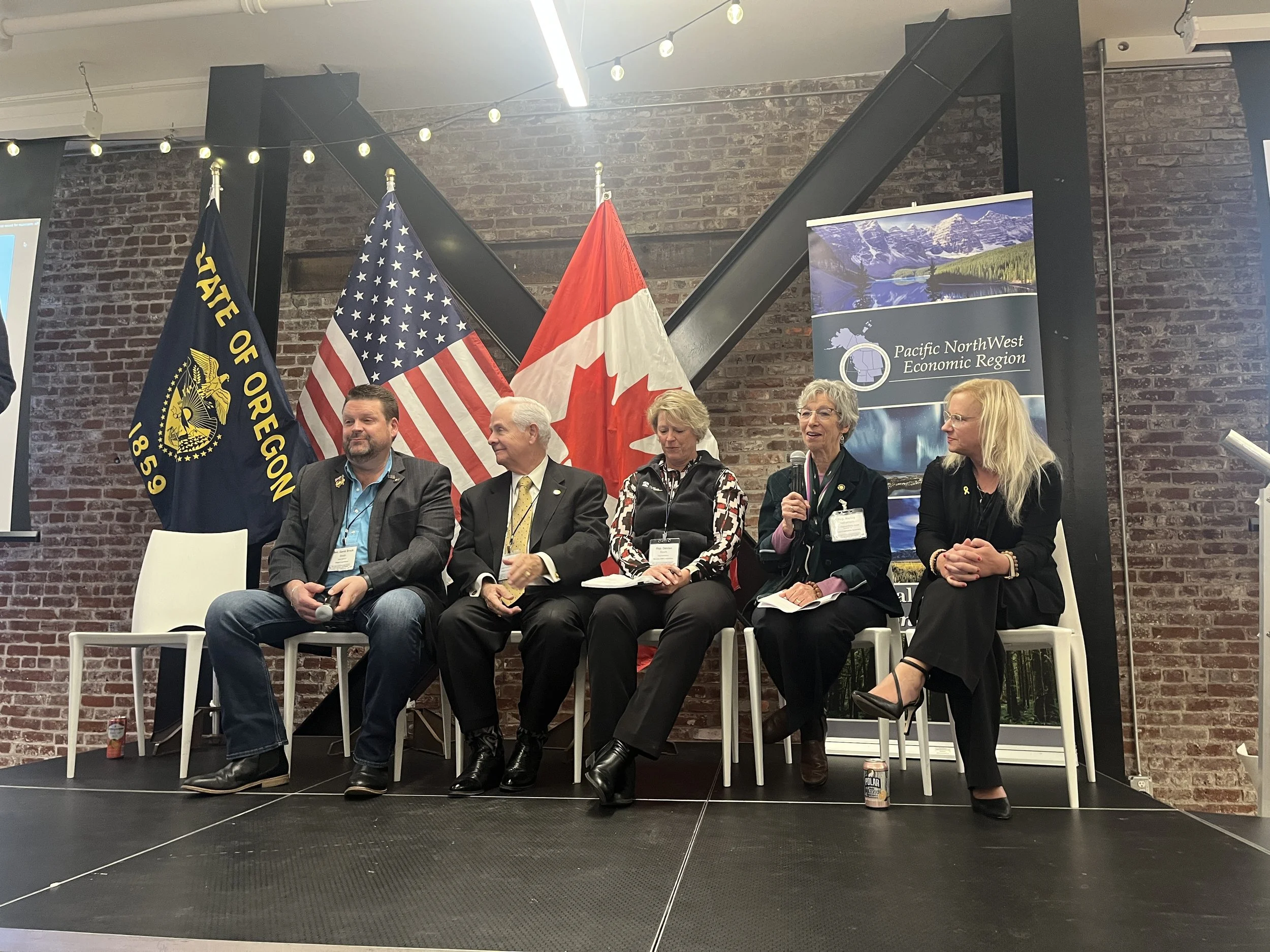

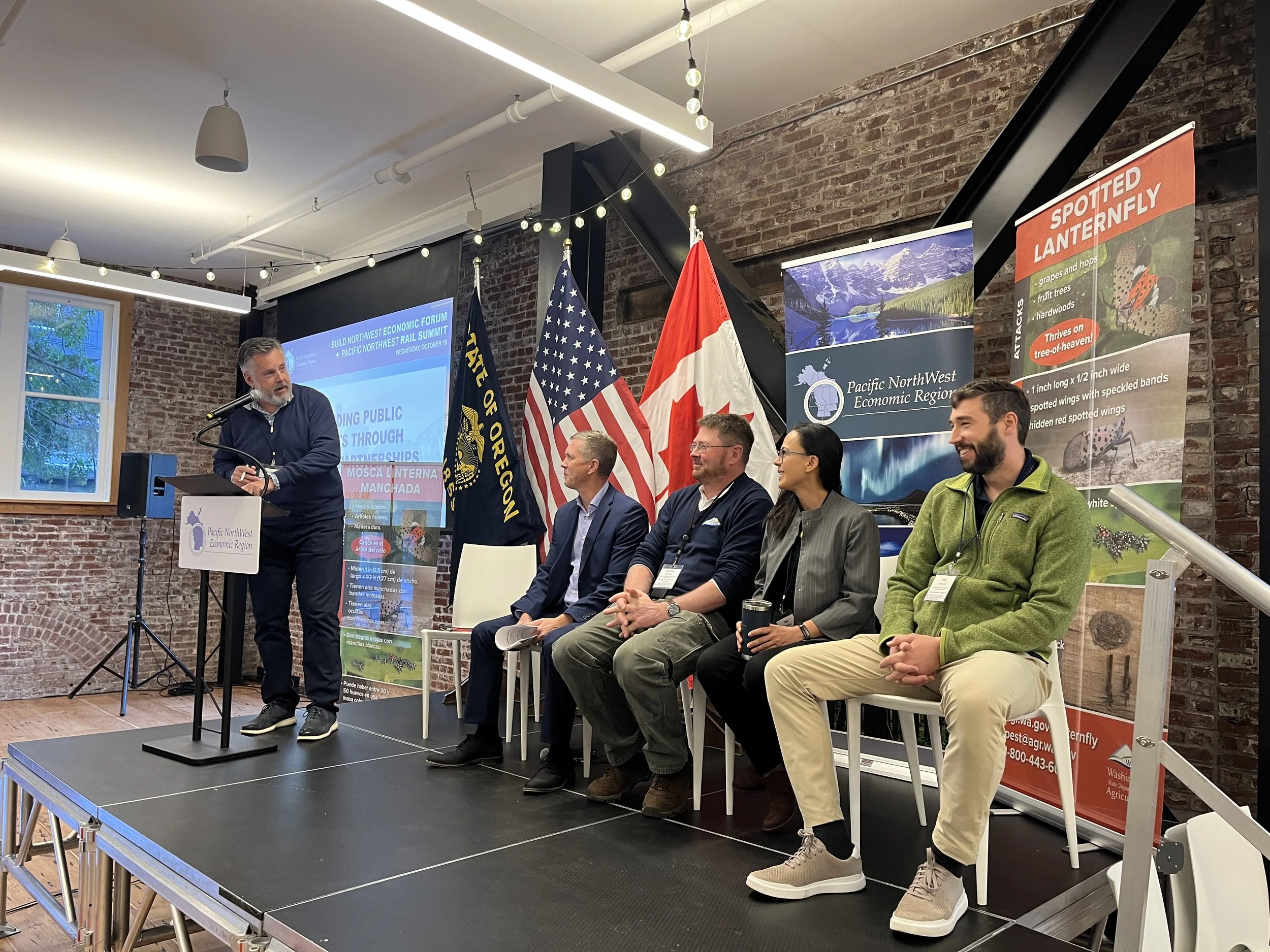

Intercity Passenger Rail Service Connects Communities, Opens Doors
Building on growing momentum for expanded passenger rail networks in the Pacific Northwest, sessions showcased how increased service and improved stations can strengthen community ties, attract new visitors and present economic opportunities.
Discussions demonstrated what a region connected by more rail can deliver for communities and economies. Some highlights:
Unleashing tourism potential through upgraded rail service can support vibrant local economies
Investments in stations and corridors spur transit oriented and mixed-use development. These auxiliary projects can revitalize downtowns and encourage robust private investment while addressing the housing crisis facing our region
Grassroots efforts spanning counties and states are underway to revive service along the Big Sky North Coast Corridor (Chicago - Seattle/Portland through southern Montana) and former Pioneer Line (Salt Lake City - Portland through southern Idaho). Restored service will provide a new mode of access for community members and visitors to reach their destinations reliably all year round
High speed rail took center stage during a fireside chat with Portland Mayor Keith Wilson, Oregon Metro Councilor Ashton Simpson and 1803 Fund CEO Rukaiyah Adams. The leaders underscored the transformative opportunities new technologies can provide for a growing Cascadia region.
A Future-Ready Rail Network Demands Collaboration Across Borders
The path to a more robust regional rail network relies on partnerships that extend beyond state lines. Leaders underscored the importance of coordinated planning and joint investment in strengthening supply chains and expanding passenger mobility options across the region. Policymakers from Oregon, Washington, Idaho and Montana joined to discuss strategies for integrated rail planning, emphasizing that forums like the Rail Summit serve as vital platforms for idea exchange.
Conversations captured the value of regional rail collaboration in the following areas:
Statewide planning: Policymakers and transportation departments in Washington, Oregon, Idaho and Montana are working to update their state rail plans to reflect current priorities and future opportunities.
Corridor ID: The Amtrak Cascades corridor and proposed Big Sky North Coast corridor are multistate routes in the first steps of the Federal Railroad Administration’s Corridor Identification and Development Program, which is aimed at guiding passenger rail planning and developing a pipeline of projects ready for funding.
With the 2026 legislative session approaching, policymakers have opportunities to align priorities and arrange rail-specific caucuses with colleagues in neighboring states.


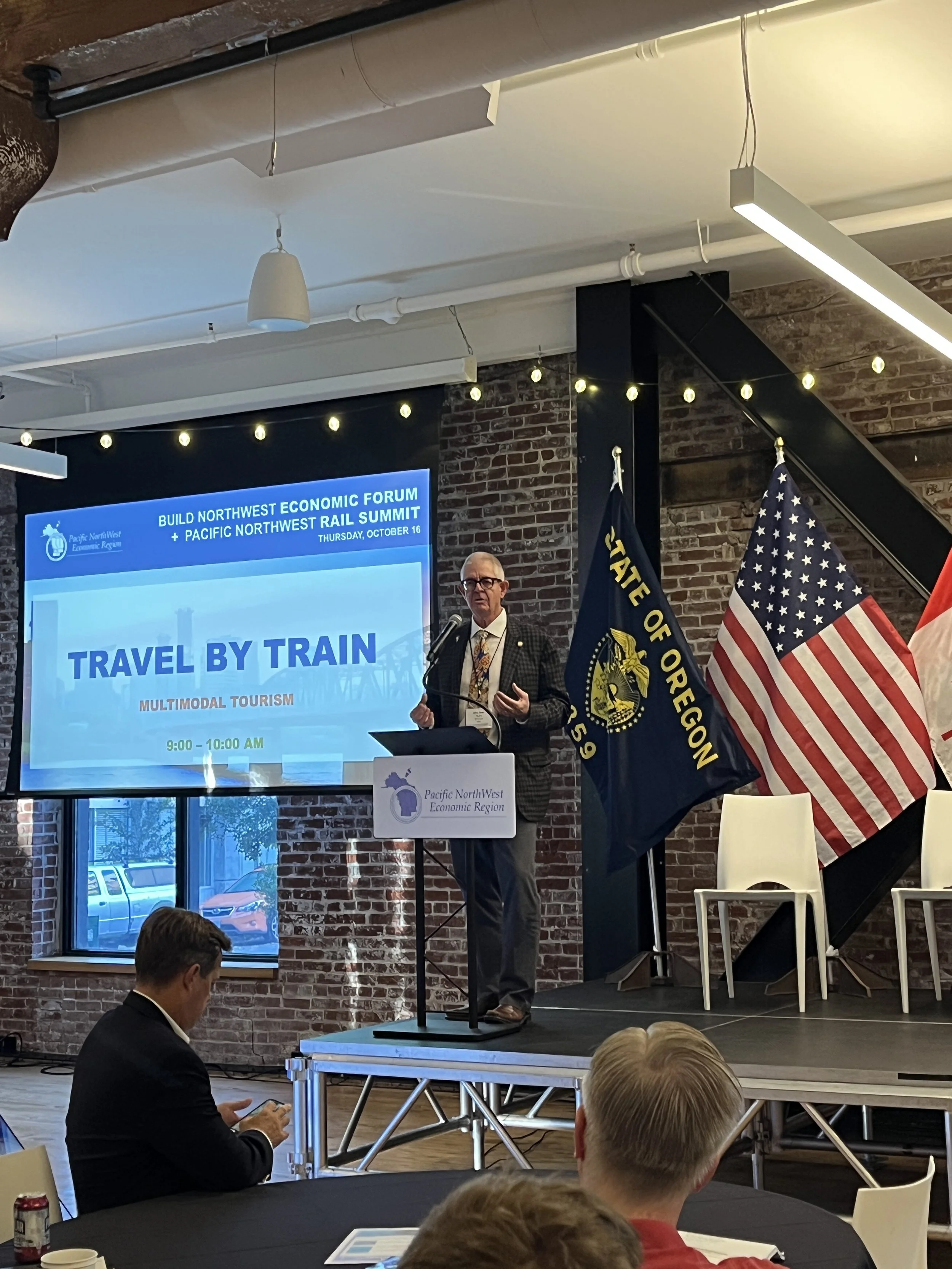


“Everyone in this room is engaged on this topic because it’s what really grows and keeps our economies going.”
Out in the Field: Policy Tours
Attendees were offered firsthand opportunities to see the regional transportation and energy network in action during policy tours to Modern Hydrogen, BNSF Vancouver rail yard and the Port of Portland Bulk Terminal facility.
Get in Touch!
Follow along with the PNWER RIA’s work by signing up for our mailing list and following us on LinkedIn.







